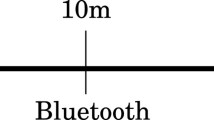Abstract
The lack of anonymity when being examined is a problem for students and teachers alike. So far, student identification in examination processes consists in a physical mark that unmistakably represents the student. New technologies provide us with methods that can handle digital data in an efficient and secured way. Android Operating System for mobile devices has had a steady increase in the number of users during the last 6 years. On the other hand, due to its popularity the trend for Smartphone devices is to increase their functionalities by adding new technologies such as Near Field Communication (NFC), but although there are several successful use cases of this technology, it has not been fully explored in the Education area, in special regarding anonymous assessment processes. With the joint use of these technologies, Android and NFC, personal data such as name or student identification number can be replaced by a small tag fixed on the examination papers, physically identical to those of the other students in that examination process. This paper describes a platform that allows the student to keep its anonymity throughout the entire process of the examination including correction and exam review.











Similar content being viewed by others
References
Dooley P, Watkins S, Phillips S (2005) Thematic review on anonymous assessment of coursework. University of Gloucestershire, UK
ENQUA (2013) Standards and guidelines for quality assurance in the European higher education area. European Association for Quality Assurance in Higher Education, Helsinki
Chen J (2005) Mobile technology in educational services. J Educ Multimed Hypermed 14(1)
Ally M (2009) Mobile learning: transforming the delivery of education & training. AU Press, Athabasca
Snyder RM (2013) RFID tags and NFC (Near Field Communication) technologies, including security and privacy implications. ASCUE Proc
Dunlop M, Brewster S (2002) The challenge of mobile devices for human computer interaction. Pers Ubiquit Comput 6: 235–236. Springer-Verlag
Android Developer site (2013) NFC programming guide. [Online] Available: http://developer.android.com/guide/topics/connectivity/nfc/index.html
Hardy R, Rukzio E (2008) Touch & interact: touch-based interaction of mobile phones with displays. Proc. 10th Int. Conf. Human-Computer Interaction with Mobile Devices and Services (MobileHCI 08), 245–254
López-Fernández M et al (2013) Control of attendance applied in higher education through mobile NFC technologies. Expert Syst Appl 40(11)
Rahimi MR, Ren J, Liu CH, Vasilakos AV, Venkatasubramanian N (2014) Mobile cloud computing: a survey, state of art and future directions. Mobile Netw Appl 19(2):133–143
Android Developer site. Android OS Development [Online] Available: http://developer.android.com
Kantar (2014) Kantar World Report Panel [Online] Available: http://www.kantarworldpanel.com/es/Noticias/Noticias/Android-ya-est-en-9-de-cada-10-nuevos-smartphones
Bryce C et al (2013) Hybrid apps: PhoneGap and Dojo Mobile on Android. IBM developer site.[Online] Available: http://www.ibm.com/developerworks/web/library/wa-mobappdev1/index.html
NFC Forum site (2013) [Online] Available: http://www.nfc-forum.org/news/pr/view?item_key=5ff546d9438563dc0e9053500710b20508ba9bbd
Rios-Aguilar S et al (2009) Position aware synchronous mobile services using A-GPS and satellite maps provisioned by means of high demand web servers. Int Symp. on Distributed Computing and Artificial Intelligence 2008. Adv Soft Comput 50: 558–564
Ding YH, Liu CH, Tang YX (2012) MVC pattern based on JAVA. Appl Mech Mater 198(199):537–541
Pires W et al (2010) Checking UML Design Patterns In Java Implementations. 4th Brazilian Symp. On Software Components, Architectures and Reuse (SBCARS), 120–129
Kazuaki M (2012) Performance evaluation of object serialization libraries in XML, JSON and binary formats. 2nd Int. Conf. on Digital Information and Communication Technology and its Applications (DICTAP), Bangkok, 177–182
Buchanan WJ, Kwecka Z, Ekonomou E (2013) A privacy preserving method using privacy enhancing techniques for location based services. Mobile Netw Appl 18(5):728–737
Lingnau A, Drobnik O, Domel P (2005) An HTTP-based infrastructure for mobile agent. 4th Int. WWW Conf.
Allah A, Mostafa M (2011) Strengths and weaknesses of near field communication (nfc) technology. Glob J Comput Sci Technol
Marcotte E (2013) Responsive web design. [Online] Available: http://alistapart.com/article/responsive-web-design/
Kumar K, Liu J, Lu YH, Bhargava B (2013) A survey of computation offloading for mobile systems. Mobile Netw Appl 18(1):129–140
Cingolani P, Alcala-Fdez J (2012) jFuzzyLogic: a robust and flexible Fuzzy-Logic inference system language implementation, in: 2012 I.E. International Conferenceon Fuzzy Systems (FUZZ-IEEE), 1–8
Cueva-Fernandez et al (2015) Fuzzy decision method to improve the information exchange in a vehicle sensor tracking system. Appl Soft Comput
Zhang D, Adipat B (2005) Challenges, methodologies, and issues in the usability testing of mobile applications. Int J Human Comput Interact 293–308
Acknowledgments
This project has been designed and directed by Prof. Sergio Rios and developed by five skilled researchers (Aldo Pedromingo Suárez, Nidia Ramiro Fernández, José Manuel Martínez Martínez, Alberto Vicente Sánchez and Enrique Gullón Corral) at Pontifical University of Salamanca, Madrid Campus (Spain).
Author information
Authors and Affiliations
Corresponding author
Rights and permissions
About this article
Cite this article
Rios-Aguilar, S., Pascual-Espada, J. & González-Crespo, R. NFC and Cloud-Based Lightweight Anonymous Assessment Mobile Intelligent Information System for Higher Education and Recruitment Competitions. Mobile Netw Appl 21, 327–336 (2016). https://doi.org/10.1007/s11036-015-0651-y
Published:
Issue Date:
DOI: https://doi.org/10.1007/s11036-015-0651-y




